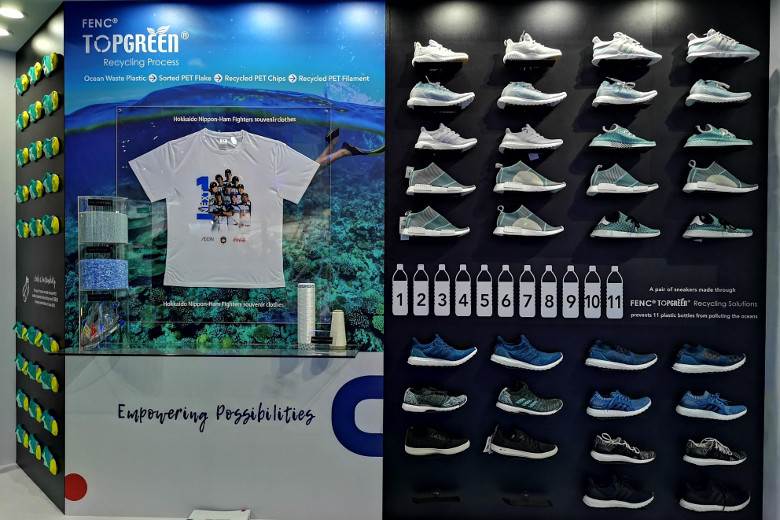FENC will share new textile recycling solution
18/10/2018

The company calls the technology TopGreen rTex. Jeffrey Hsu, FENC’s research and development manager, told sportstextiles at the exhibition that this name is used to refer to both the recycled polyester and the process used to create it.
FENC has said that the TopGreen rTex process is capable of recycling the polyester from all types of post-consumer textile, including mixed streams. The collected textiles are separated without the use of complex solvents. The process works by dissolving the polyester, before the mixed polymers and dyestuffs are filtered out. The remaining material, such as cellulose, can be converted into fuel rods and safely incinerated.
Mr Hsu said the motivation behind this project was that 70% of the planet’s polyester waste comes in the form of post-consumer textiles. Plastic packaging, such as drinks bottles, accounts for just 30%, meaning that although its environmental impact often features more prominently in the media, textile waste is in fact the larger issue.
He also made the distinction between what he called ‘decycling’ (sometimes known as downcycling) and recycling. He explained that decycling typically involves shredding the textile and then using it in a lower quality form, for example in carpets. This is very different from recycling, he said, which results in a material that is still suitable for use in its initial intended application (i.e. in clothing).
The TopGreen rTex technology is now in the pilot phase, having been under development at FENC as an internal project for a number of years. Mr Hsu estimates that the industry average for creating a new polymer is around 10 years, which is why the company is already working on this. He says the technology will come to market in 2022 or 2023 at the earliest.
FENC intends to eventually license the technology, which would allow the whole industry to benefit from its innovation. With increasingly strict restrictions on the import of second-hand garments and the cost associated with shipping them around the world, Mr Hsu said the ideal situation would be for the technology to be applied on a ‘local for local’ basis near to important textile and garment manufacturing hubs.
Image: FENC’s display presenting its TopGreen rTex technology.








